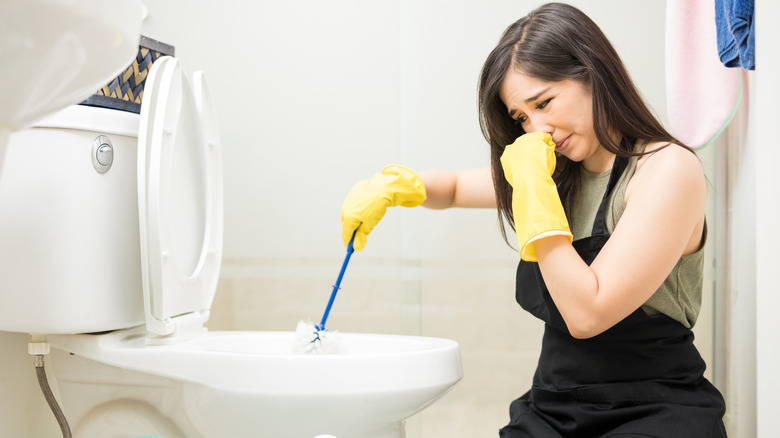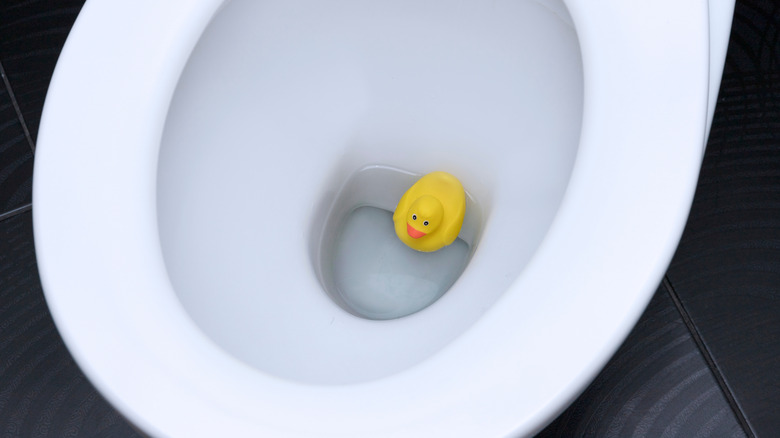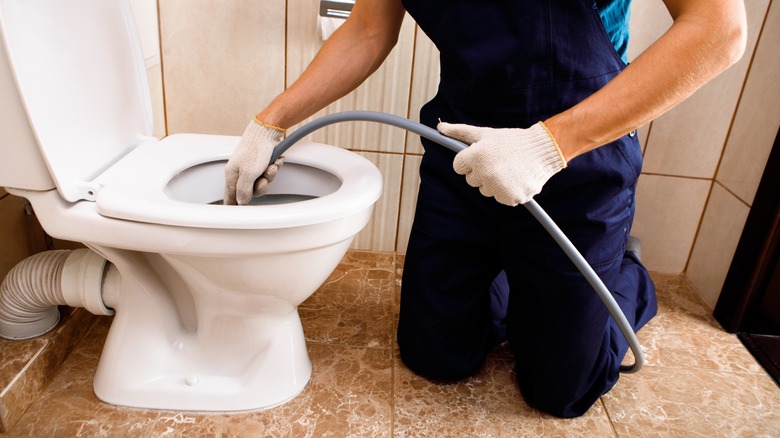Prevent Smelly Clogs With These Toilet Drain Cleaning Tricks
You'll probably notice a typical toilet clog right away because it's causing your fixture to overflow, and you can usually clear these congestions with a plunger. However, when the issue is deeper in the plumbing, the only clue that you have a problem may be a bad odor or a slow-flushing toilet. The best way to combat a smelly clog that's far down in the fixture's drain pipe is to prevent it from happening in the first place.
One of the easiest preventative measures is regularly cleaning the toilet drain as often as once a week. Try a mixture of baking soda and vinegar for this purpose. Vinegar has a high level of acidity that cuts through many kinds of grime, and mixing it with sodium bicarbonate releases carbon dioxide. Add 1 cup of baking soda to the water in the bowl and leave it in place for a few minutes. Then slowly pour 2 cups of vinegar and let the combination bubble for several minutes before flushing. You can also use enzyme-based drain cleaners in the toilet drain, as these solutions work better as preventative measures rather than for removing existing clogs.
Proper flushing protocol and sewer drain replacement
Deep drain pipe clogs often occur because someone flushed improper items down the toilet. Things like feminine hygiene products, wet wipes, condoms, dental floss, hair, garbage, pets' or kids' toys, and cotton swabs are not designed to go through the sewer pipes, so keep these items out of the toilet. Some products may have labeling that says they're safe to flush, but this isn't necessarily true. They could still get stuck and cause a clog when other solids attempt to move through the sewer drain pipe. Basically, flushing anything beyond toilet paper could cause backup eventually.
Tree roots in your yard can also cause a clog by penetrating the sewer pipe. These plant organs seek out areas of moisture in the ground, and plumbing systems are a constant source of water. If the pipes have small cracks in them, the roots may be able to penetrate them and grow inside the pipe, causing a partial clog that could create odors as flushed solids jam against the plants. If you have an older clay pipe buried for your sewer line, root penetration is far more likely than with modern concrete or PVC plastic sewer systems. Replace your pipes with a modern material as a preventative measure.
Calling a professional
As a final preventative measure, you probably should have a plumber inspect your sewer system on an annual basis. This inspection can potentially find small clogs before they increase in size. If you have older sewer pipes, the maintenance professional can inspect them and look for potential damage from tree roots.
The maintenance pro may use a snake or auger with a camera attached to the end to do a sewer and toilet pipe inspection. The auger consists of a coil of long, thin metal cable or another firm material that you activate using a crank to force it through the drain pipes underneath the toilet. In addition to using the camera to look for signs of potential blockage, it also may push any deep clogs out of the way, putting an end to the odor before you might have even noticed it.
Although you can use an auger with a camera yourself as a DIY project, you risk getting stuck and damaging the pipes, potentially causing a bigger problem. Calling a plumber may be the safer option if you're unsure how to use this device yourself. They have experience with the sewer inspection camera and can readily identify problems.


